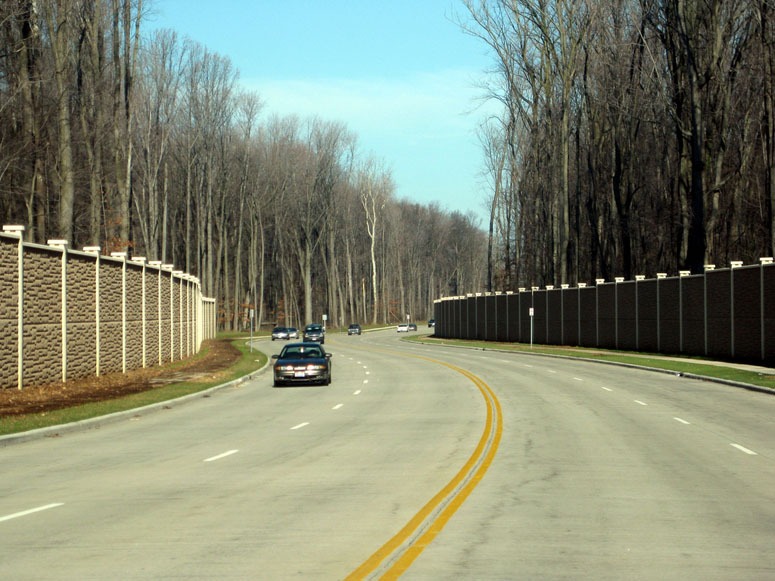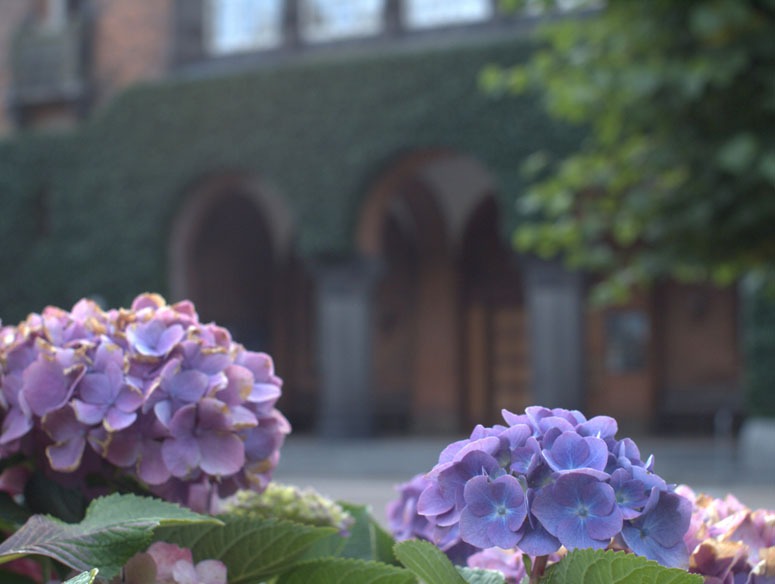
Non-environmental noise barrier
Environmental noise barriers can improve the design of cities, especially when they are built with a context-sensitive appreciation of construction and planting. Or they can be a waste of time and money. The design aim should be to create quiet areas for people to enjoy. I do not know of any evidence for fauna and flora being troubled by noise. So let’s think about how to create quiet areas in towns for busy people, like the garden of the Royal Library in Copenhagen (below). Can anyone recommend other examples of urban quiet places?
Image courtesy bankbryan

Image courtesy Sigfrid Lundberg


Paley Park in New York, a ‘pocket park’ is probably the best known. Water is used to mask traffic noise, vegetation is used to soothe the eye, bird song to soothe the ear… Parc de Bercy in Paris also comes to mind although much greater in size. The park includes a wide elevated promenade raised high above the 6 lanes of traffic running along the Seine. This mitigates the visual and aural effects of traffic noise whilst providing a wonderful elevated walk and views out towards the Seine above and over the traffic on the one side and views into the various park ‘rooms’ and gardens on the other.
I have never been there with a noise meter but it must be a lot quieter inside St Dunstans in the East than it is in the street outside.
musée Du Quai Branly, in Paris with its enormous glass wall which creates a wonderfully quiet space next to a busy road without creating a dark imposing space in any way.
And lets not forget the most totally wonderful, spectacular and brilliant project of them all: the Trevi Fountain. If Paley Park counts as a quiet place then so does Trevi (at least when not ovewhelmed with tourists).
JingxinZhai is a very good example.
If we translate “Jingxinzhai” to English,which is ” Quiet Heart Garden”…
JingxinZhai is amazingly near a busy road for such a quiet, beautiful and peaceful place.
Rather than a quiet place – a quiet route extends through north London that would have been the main source of noise in the past:
The Regents Canal is quiet because it is set lower than street level – the presence of still water adds to this and the occasional hopeful angler also.
The noise is mostly generated by bicycle bells & pedestrian grumbles…!
Exploring notions of quiet spaces is of critical importance in contemporary environments where economy and efficiency has created a trend of shared spaces which are populated at increasing densities. This is particularly so with mobile communications which promote the dichotomous public/private conversation.
Is there a place for contemplation, reflection, pause and silence in future environments?
I like Christopher Alexander’s QUIET BACKS pattern and his use of the Backs in Cambridge as an example of what many cities should do with regard to urban quiet.